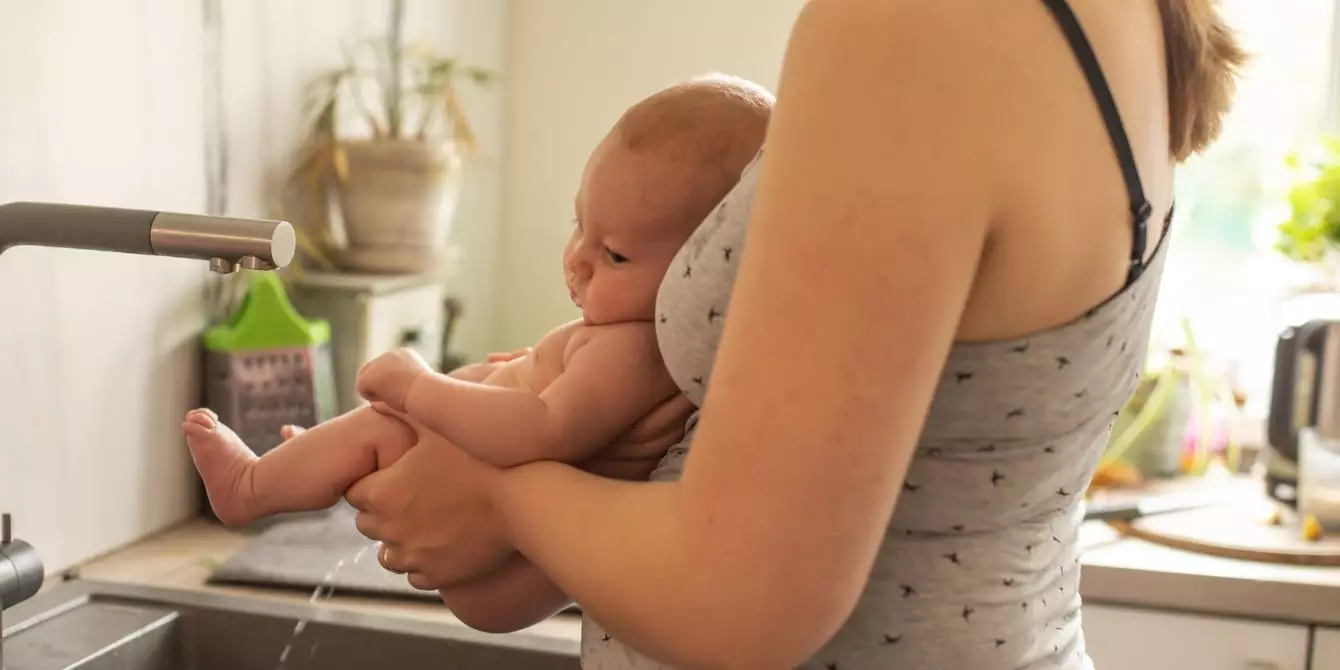For many parents, the endeavor of potty training their toddlers often resembles traversing a maze filled with obstacles and challenges. Accidents are a frequent occurrence, fluctuations in bowel habits can be mystifying, and the emotional toll of the process can weigh heavily on both parents and children. While traditional methods like the “potty-training weekend” or Montessori-inspired approaches are widely recognized, a lesser-known yet increasingly intriguing alternative exists: elimination communication (EC), also referred to as natural infant hygiene. This technique, largely rooted in a child’s natural instincts and cues, promotes a more intuitive connection between parent and child.
Dr. Harvey Karp, a well-known pediatrician, underscores the idea that humans, akin to many animals, possess an intrinsic drive to distance themselves from waste. This instinctive behavior forms the foundation of elimination communication, which is far removed from modern diapering methods. By attuning ourselves to the natural signals emitted by our infants, we facilitate a more hygienic and responsive form of baby care.
Elimination communication offers a multitude of advantages, markedly enhancing the bonding experience between parent and child. Not only does it prompt caregivers to become more aware of their baby’s needs, but it also fosters a deeper emotional connection. By identifying and interpreting a baby’s cues, parents can respond more effectively to their infant’s cries and signals. This empathetic interaction leads to heightened understanding and a more profound parent-child relationship.
From a health perspective, eliminating the use of diapers can yield substantial benefits. Diapers, particularly disposable ones, create a moist and irritating environment that often leads to skin irritations including diaper rash and infections. By practicing EC, parents can significantly reduce their child’s exposure to such complications. Dr. Bender, a medical expert on the subject, has noted that such irritations diminish when diapers are removed from the equation. Meanwhile, research indicates early bladder emptying may decrease the likelihood of urinary tract infections—an added benefit for children engaged in EC.
Moreover, let’s not overlook the financial implications. The expenses associated with diapers can accumulate rapidly, with families spending nearly $1,000 in the first year alone. EC minimizes these costs by allowing for a reduction in the number of diapers used, representing not just a personal savings but also an opportunity to contribute to environmental sustainability.
Challenges to Consider
Despite its benefits, elimination communication is not without challenges. One significant hurdle is societal perception; in cultures where diapering is standard practice, adopting EC may feel isolating. Peer opinions or familial skepticism can create significant barriers for parents seeking to embrace this approach. However, with the advent of social media and the internet, numerous communities and resources—like Go Diaper Free—have emerged, allowing for shared experiences and encouragement among likeminded parents.
Furthermore, consistently practicing EC requires a significant time commitment. Parents and caregivers must be present and attentive, ready to observe their child’s cues, which can be a departure from the convenience offered by disposable diapers. This can pose particular difficulties in settings such as daycare, where caregivers may not have the capacity to provide such individual attention.
If elimination communication piques your interest, starting the practice can be as simple as tuning in to your child’s behavior. Observing your infant’s natural timing—such as their elimination patterns following meals or upon waking—can provide invaluable insights into when to introduce bathroom routines. Establishing a unique sound or cue during elimination can also solidify communication, making the transition smoother as your child grows.
It’s essential to approach EC with an open mind, acknowledging that it doesn’t have to be a rigid practice. Flexibility is key—parents can incorporate EC at certain times of day while relying on diapers during others. Ultimately, the goal of EC is to create a dialogue between parent and child regarding bathroom habits, rather than presenting it as an unwelcome duty.
As with any parenting decision, choosing to engage in elimination communication is deeply personal and should align with family dynamics. While EC can provide numerous advantages, including enhanced parent-child bonding and potential cost savings, it is equally essential to assess the unique circumstances of your family.
Moreover, experts like Dr. Bender emphasize the importance of enjoying the process. EC should not revolve around rigid expectations or external pressures; instead, it should be an opportunity for connection. If you find yourself feeling overwhelmed or stressed, it’s perfectly acceptable to reevaluate and make adjustments based on your family’s needs.
In the end, whether you opt for traditional diapering or embrace elimination communication, it’s important to explore various avenues of infant care with curiosity and patience. While EC may present itself as a compelling alternative, the choice should ultimately reflect what feels right for you and your family. Be open to the possibilities, and you may find the experience remarkably rewarding.

